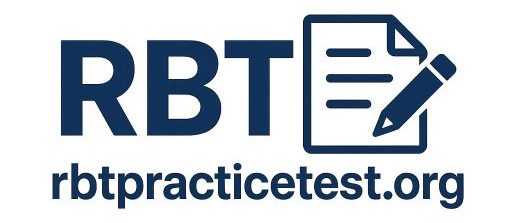Teaching complex skills can feel overwhelming, especially when working with individuals who need extra support. That’s where chaining comes in, a proven strategy in Applied Behavior Analysis (ABA) that helps us break down complicated tasks into smaller, manageable steps. By linking each step together, we guide learners through the process, making it much easier to master even the most challenging routines.
This writing explains what is chaining, how it works, the differences between forward chaining, backward chaining, and total task chaining, and how RBTs decide which method to use based on individual learner needs. By understanding these techniques, you’ll be better equipped to support learners effectively and help them gain confidence in mastering essential life skills.
What is chaining?
Chaining is an instructional technique in Applied Behavior Analysis (ABA) that involves breaking a complex behavior into smaller, connected steps. Each step in a chain acts as a cue for the next step, creating a predictable sequence. RBTs use this method to systematically teach skills that have a clear order, such as self-care routines, academic procedures, and vocational tasks.
Chaining reinforces each individual step as learners master it, promoting skill acquisition and confidence. Unlike teaching isolated actions, chaining connects steps, so learners see how each behavior leads to goal completion. For example, washing hands involves turning on water, wetting hands, applying soap, scrubbing, rinsing, and drying, with every action dependent on completing the previous one.
How does chaining work?
Chaining organizes complex behaviors into step-by-step sequences, enabling learners to master one component at a time. We use task analysis to break down each skill, teaching and reinforcing each step until the entire behavior chain is independent.
Forward chaining
Forward chaining teaches steps in sequential order, starting from the first action. RBTs introduce the learner to the initial step, providing support until they complete it independently. Once mastered, we add the next step, combining both.
This process repeats, gradually building the full sequence. Forward chaining suits tasks where order matters, such as making a bed, putting on clothes, or brushing teeth.
Backward chaining
Backward chaining focuses on the last step first. RBTs guide the learner through all but the final step, prompting them to perform the last action independently. Once the final step is secure, we include the second-to-last step, working backward through the sequence.
Backward chaining leverages the immediate reinforcement of task completion, making it especially effective for activities like completing puzzles or tying shoelaces, where the end result motivates engagement.
Total task chaining
Total task chaining involves practicing the entire sequence in every teaching session. RBTs prompt the learner through each step as needed, supporting only where independence falters. With practice, learners improve at each step until they can complete the whole task on their own. In this method, prompting is used only when needed and then slowly reduced as the learner becomes more independent.
Examples of chaining in ABA therapy
Chaining applies to daily living and academic skills, supporting both children and adults. Examples include:
- Washing hands: Use forward chaining to teach steps like turning on the water, applying soap, and rinsing.
- Completing a puzzle: Backward chaining allows learners to experience the satisfaction of placing the last piece each time.
- Making a bed: Forward chaining teaches each necessary step, from pulling up the sheet to fluffing pillows.
- Self-Care routines: Tasks like brushing teeth or buttoning a shirt benefit from stepwise instruction, fostering independence.
| Chaining type | Sequence order | Common use cases | Teaching focus |
| Forward Chaining | First step to last | Dressing, bed making, tooth brushing | Initial steps to full task |
| Backward Chaining | Last step to first | Puzzles, shoe-tying, snack preparation | Final steps as reinforcement |
| Total Task Chaining | Entire sequence | Learners with partial skills, varied tasks | Entire sequence each session |
RBTs can select the chaining method based on the learner’s needs and the task complexity, ensuring efficient and individualized skill acquisition across environments.
Differences between how backward chaining and forward chaining works
Backward chaining and forward chaining apply distinct approaches in ABA, each shaping how RBTs teach multi-step skills.
- Step sequence placement
Backward chaining starts at the last step of a task, moving in reverse order. For example, during hand washing, RBTs guide the learner through every stage except drying hands, which they do alone.
Forward chaining begins with the first step, moving in sequence. When teaching hand washing with forward chaining, the learner independently turns on the tap, while RBTs prompt them through the remaining phases.
- Reinforcement timing
Backward chaining delivers reinforcement immediately after completing the most meaningful final step. Data from ABA practice shows this direct feedback helps learners connect the action to its immediate reward, increasing motivation for each subsequent trial.
Forward chaining gives reinforcement after the initial step, which supports early engagement. This sequence fits tasks where success at the beginning boosts overall participation.
- Independence progression
Backward chaining increases independent responses from the end of the chain to the start. Learners gradually perform more concluding steps alone.
Forward chaining expands independence in the initial steps of the sequence, with learners building mastery from start to finish. Our task analysis determines which method aligns better based on where the learner shows emerging skills.
- Learner experience
Backward chaining benefits individuals who thrive on completing tasks and receiving terminal reinforcement. For example, students sensitive to the satisfaction of finishing may respond best to this method.
Forward chaining supports those who need early success signals or demonstrate strength in initial actions.
The table below indicates main differences between how backward chaining and forward chaining work:
| Chaining type | Sequence start point | First step done alone | Immediate reinforcement | Ideal for |
| Backward Chaining | Last step | Final action | Yes | Learners who benefit from task completion |
| Forward Chaining | First step | Initial action | No, after each mastered | Learners strong at task initiation |
Backward chaining and forward chaining differ in step order, reinforcement placement, and independence development, so selecting the right approach depends on the learner’s strengths and the demands of the target skill.
When to use each chaining technique for RBTs?
Different chaining techniques fit distinct learner profiles and task characteristics in ABA environments. Understanding when to use forward chaining, backward chaining, or total task chaining guides us toward supporting skill acquisition efficiently.
- Forward chaining
Forward chaining supports learners who struggle with beginning tasks, like someone hesitant to start brushing teeth. Tasks with steps that build in a predictable, linear order, such as recipes or hygienic routines, align with forward chaining. Early steps receive immediate reinforcement, which builds participation and momentum from the first action.
- Backward chaining
Backward chaining fits learners who benefit from seeing tasks completed or need instant success. Tasks where the last step provides natural reward, like zipping up a jacket or completing a puzzle, use backward chaining best. Learners master steps in reverse, always experiencing reinforcement after the final action, which builds confidence and helps them associate positive outcomes with completing challenging routines.
- Total task chaining
Total task chaining matches learners capable of completing several or all steps with varying support. Simple, short-sequence skills, such as setting a table or making a sandwich, are ideal. This approach allows practice of the full sequence in each session and works well when our goal is comprehensive, holistic skill development.
BCBAs determine the optimal chaining technique by analyzing learner performance data and assessing the task’s complexity. Each method ensures incremental independence and measurable progress, allowing us to individualize support and maximize learning outcomes.
This approach allows practice of the full sequence in each session and works well when our goal is comprehensive, holistic skill development. It is helpful when implementing a skill acquisition plan that targets multiple steps within a routine.

